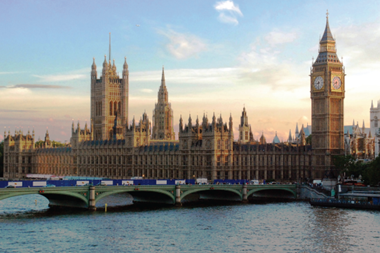The first pillar in Switzerland is represented by the pay-as-you-go AHV/IV pension scheme. Generally, all persons living in Switzerland are insured within AHV/I that covers the existential needs in case of old age, disability and death. The minimum pension for a single person amounts to e8,000 per year and the maximum comes to e16,000.
The second pillar is regulated under the Swiss federal BGV law on occupational pension schemes that entered into force in January 1985. As a consequence the second pillar became mandatory for all employees that contribute to AHV/IV and have an income beyond a threshold of actually e16,000 per year. For the contributions and for the benefits, the law defines certain minimum requirements, but the pension schemes may go beyond that and usually do so. The first and second pillar together should provide a level of benefits to its members that allow them to hold a living standard according to the situation before retirement.
Regarding the third pillar, private savings are encouraged in Switzerland with tax privileges for bank and insurance savings up to e4,000 per year for employees and up to e20,000 per year for persons without second pillar membership. Concerning the availability of these savings before retirement, the tax authority imposes heavy restrictions.
ASIP’s involvment
The most important project in which the ASIP has been involved in the last couple of years is the first revision of the Swiss federal law on occupational pension schemes that has been conducted in co-ordination with the 11th revision of the AHV.
Since 1985 the Swiss federal law on occupational pension schemes has been modified several times and new laws as the Swiss federal law on vested benefits in occupational pension schemes and the Swiss federal law promoting home ownership via occupational pension scheme funds have been added. In the lastest new revision, the government proposed the following changes:
o Flexible start for retirement. Based on a standard retirement age of 65 for male and female employees, the employees can choose to retire between the age of 59 and 70.
o Flexible form of retirement benefits. Introduction of a lump-sum capital payment option and the combination of lump-sum payments with pensions. Introduction of a part retirement option and a part pension for employees.
o Reduction of the conversion rate of the individual retirement accounts from 7.2% to 6.65% within the forthcoming 15 years.
o Increase of the contributions to the retirement accounts to compensate the reduction of the conversion rate.
o Introduction of a maximum salary that can be insured on tax privileged basis within the occupational pension scheme at a level of e240,000.
o Additional restrictions to the “additional benefit coverage contributions”.
The ASIP has also been directly involved on everything to do with the investment side of the Swiss pension market, publishing in association with Watson Wyatt surveys on pension performance. With around SFr 80bn (P53bn), the invested capital of the 60 funds that participated in the survey represent 20% of the investments of all pension funds affiliated to ASIP. The results of the survey at the end of the second quarter of 2001 show that after a difficult year for the stock markets in 2000, the market remained unfavourable. The median yield of the consolidated securities assets for the first six months of this year was –2.2%. This compares with a marginally positive value of 1.5% for the whole of the year 2000. The asset allocation showed a 2.6% lower weighting of Swiss equities compared to the year-end 2000 figure.
Revised investment guidelines came into effect in April 2000, adapting investment limitations to the actual needs of the pension schemes and to the conditions on the capital markets. The government has chosen a compromise between the old regulation, that was heavily based on restrict percentages, and the ‘prudent man rule’. Although investment limits by asset class remain the same - 50% equities, 30% foreign currency - the new investment guidelines were aimed to bring more freedom to pension fund sponsors, who are now free to determine their own strategies without seeking special dispensation from the supervisory authorities as was required before. However, more than a year after the law was introduced very few changes in asset allocation have been made in pension funds portfolios.
Also this year the association announced it would lobby the Swiss government to overturn legislation cancelling an exemption on stamp duties for foreign investment by Swiss banks and pension funds. Under the new law pension funds in Switzerland are subject to stamp duty on all stock market transactions after. In addition, pension funds with assets of at least Sfr10m in securities will be henceforth treated as security dealers (Effektenhändler/commerçant de titres) and thus be forced to register as such with the tax authorities and fulfill a number of administrative requirements.
Pension funds that use a Swiss domiciled money manager were already paying stamp duty on both Swiss (0.075%) and foreign (0.15%) asset transactions, and so the new law will not affect them financially.
Other pension funds, such as those managed in house or using one or more foreign external money managers, will face additional costs as a result of the stamp duty.
Also, compliance with the new registration and administration procedures will need to be ensured, including quarterly settlement of the stamp duty; in this regard, use of a Swiss-based global custodian could facilitate this process.
The ASIP sees in this new law an extra burden for pension funds.
In general the association aims to do everything it can to ensure that:
o apart from advising its members on all current legal issues, occupational provision will be able to retain its place within the Swiss three-pillar system;
o the legislature will refrain from inserting unnecessary regulations;
o the providential schemes will still have reasonable scope to expand their versatile system of benefits.
As a result of these actions, Swiss occupational provision, which is financed by
the level premium sys0tem, will be able
to relieve the strain on the AHV national basic insurance quite substantially, according to the ASIP.














No comments yet